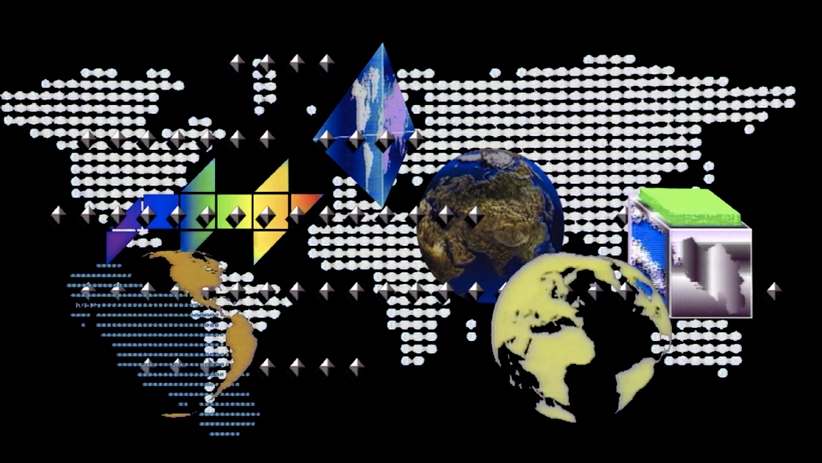I’ve been interested in Aleksandra Domanović’s work ever since I saw a version of 19:30 (2010–), an ongoing project in which the artist amasses an archive of evening news idents from the former Yugoslavia, spanning 1958 to the present, and invites DJs to remix them. Techno and the evening news were moments of remembered togetherness for the artist and others from the region during a period of change and turmoil, and the combination of the two creates a complex layering of psychological and historical memories of a country that no longer exists. The idea of dancing and being somewhere else mentally is really strong, I think, and powerfully communicated; it’s mournful yet celebratory – full of energy and lively bodies.
Domanović has also created paper-stack sculptures (made by printing to the edge of blank A4 paper, at full bleed) that commemorate the day in 2010 that the .yu domain was taken off the Internet. The images on the sides of the stacks (some of which one can download to print at home) depict violent football fans from the region letting off flares at matches. The memorialising of this moment makes sense for an artist so committed to the Internet as a form; and yet Domanović is a cultural anthropologist who carries out her work in the plastic world of sculptures, physical archives and documentation as much as she does online.
As in 19:30 and the paper monuments, what powers much of the artist’s work is an interest in pinpointing those moments when struggles with national identity become visibly manifest on the surface of a culture. This is brilliantly demonstrated in the video essay Turbo Sculpture (2009–12), an engaging piece of analysis that tracks the recent popularity in Eastern Europe (and in Serbia in particular) for creating glitzy public monuments to honour celebrities and film characters such as Rocky, Jackie Chan and Tarzan (British pinup Sam Fox and East Coast rapper Tupac have also been mooted) in place of celebrating national heroes, following the atrocities of war and the damaged reputations of political leaders. For the Marrakech Biennale this year she plans to create her own form of turbo sculpture: a version of a socialist monument covered in tadelakt stone, the soapy, softened type of finishing common in Moroccan palaces, riads and hammams.
This article originally appeared in the March 2012 issue.
